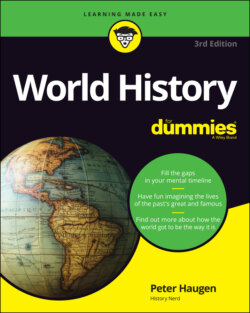Читать книгу World History For Dummies - Peter Haugen - Страница 47
Looking at events from different angles
ОглавлениеSome of the most fascinating characters in history are those who appear to be heroes from one perspective and villains from another. An example, also from English history, is Guy Fawkes, the man who tried to blow up King James I and both houses of Parliament in 1605. Fawkes was caught red-handed before he could ignite a massive charge that would have blown apart a meeting of the monarch and parliamentarians. He was executed for his crime and remains a British national villain. In the United Kingdom, people still celebrate Bonfire Night every November 5, the anniversary of his capture, by building bonfires and burning effigies.
Yet Fawkes wasn’t merely a villain — not just a mad bomber. He was part of a group of Catholic activists who planned this violent act as a last-ditch effort to overcome repressive and brutal anti-Catholic persecution in officially Protestant England. Viewed from that perspective, many English Catholics of the time considered Fawkes to be a freedom fighter.
In a similar vein, George Washington is viewed as one of the greatest Americans ever — the Father of His Country. But events could have unfolded differently. As an American colonist, Washington was technically a subject of the British Crown. If the American Revolution of the 1770s had failed, the king would have been justified in charging Washington with treason, a hanging offense. Thus, he could have gone down in history as a traitor.
When complex, self-contradictory personalities clash, history’s narrative grows beyond multifaceted and becomes multidimensional, if you will. So, if you want to get comfortable with history, don’t try too hard to fit any person into any single category.
